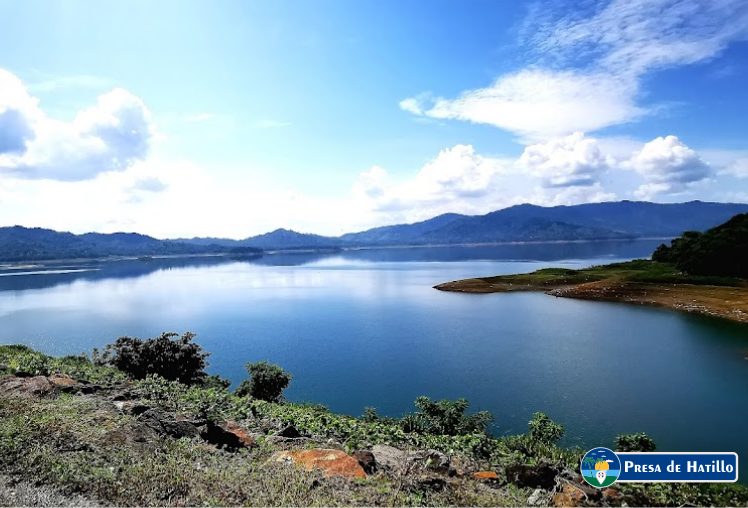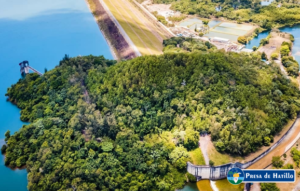
The Hatillo Dam is an important and imposing hydraulic dam supplied by the Yuna River, it is located in the community of the same name, six kilometers southwest of the municipality of Cotuí, capital of the Sánchez Ramírez province, Dominican Republic and 113 km northwest from the city of Santo Domingo.
Its construction entailed many economic expenses, from the eviction of entire communities to the construction of a new highway (Piedra Blanca-Cotuí), since the main access road to the city of Moncion was left under the waters of the reservoir created by the dam. Communities such as Hatillo, El Plátano, Las Cruces, El 8 de Hatillo and Sabana del Meladito were completely or partially under the waters of the reservoir.
The reservoir is an important source of income for the fishermen of the surrounding area, where various species of fish are fished, such as carp, tilapia, trout and shrimp. In recent years, species that are harmful to existing species have been introduced into the lake, such as: baku, catfish and toadfish.
Its construction began in August 1977 and was completed in 1984, at a cost of 41 million dollars, financed with the Dominican Government’s own resources. The dam’s supply source is the Yuna River, with a length of 138.60 kilometers, an average flow of 35.4 m3/s, and an average normal rainfall of 1,562.47 mm/year.

The Hatillo Dam is the hydrographic basin of dams with the highest rainfall in the Dominican Republic, its extension is 5,235.63 km². This dam supplies water to the rainiest area of the country, for this reason these lands are the most appropriate for planting rice. The main tributaries of the Yuna River from the dam upwards are the Camu and Jima rivers and others of lesser importance such as Las Avispas, Río Blanco, Masipedro, Yuboa, Hato Viejo, Maimón, Arroyon and Tireito streams.
The reservoir of the Hatillo dam has a volume of water of 710 million cubic meters, an area of 22 km² and a maximum length of 15 km, making it the largest freshwater lake in the Caribbean. The maximum level of operation is 86.5 meters above sea level and the minimum is 70 meters above sea level. The dam of this dam is a wall with a length of 1.8 km that is made up of a structure of the type of earth and coiling with a depth of screen of 28 m and a total volume of 11.5 million m³. Its maximum net height is 60 m and its height at the crest is 102.75 meters above sea level.
The Hatillo landfill is of the orifice type, with two 8 x 4 meter outlets. Its maximum capacity is 650 m3/s. It has a width of 60 m and the length of its discharge channel is 800 meters, including the dissipator area. The power house and the valve house are two different buildings located at the foot of the dam. The valve house houses two hollow jet type valves that discharge 82 m3/s each. This building has an area for dining room and meeting room. The machine building consists of three levels: the first underground level houses the Francis-type turbine, with a vertical axis with a capacity of 8 MW, a speed of 225 rpm, a flow rate of 30 m3/s and a head of 30.6 meters.
Operating from 1984 to 2001, the Hatillo dam reservoir had an inflow volume of 23,905,985,000 million m³ of water. Of which 11,591,063 million m³ were turbined; drained 4 billion,347,197 million m³ and discharged 8 billion,591,302 million m³. The Hatillo dam that stores the waters of the Yuna River has multiple purposes, but its priority is to serve as flood control. This also guarantees the irrigation of 198,612 tasks of land, in its middle part, and 401,088 tasks in the lower part.
To find out about other interesting places in the Dominican Republic, follow us at visitadominicana.com
How to get to La Presa de Hatillo: CLICK HERE!
